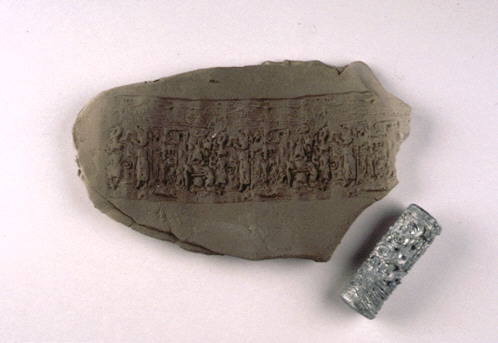
by Tanja Gohlert, '00

Seals were most often made of stone but also sometimes of bone, ivory, faience, glass, metal, wood, or even sun-dried or baked clay. A recessed inscription was carved onto the cylinder, which produced a raised impression when rolled on a clay tablet or envelope. Cylinder seals were used to protect vessels, clay envelopes and storeroom door latches from tampering. They guaranteed authenticity, marked ownership, indicated participation in a legal transaction and protected goods against theft.